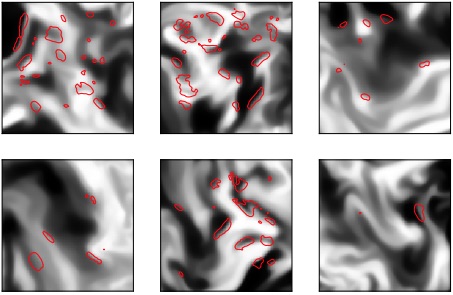The interstellar medium (ISM) of galaxies is composed of a turbulent magnetized plasma. In order to quantitatively measure relevant turbulent parameters of the ISM, a wide variety of statistical techniques and metrics have been developed that are often tested using numerical simulations and analytic formalism. These metrics are typically based on the Fourier power spectrum, which does not capture the Fourier phase information that carries the morphological characteristics of images. In this work we use density slices of magnetohydrodyanmic turbulence simulations to demonstrate that a modern tool, convolutional neural networks, can capture significant information encoded in the Fourier phases. We train the neural network to distinguish between two simulations with different levels of magnetization. We find that, even given a tiny slice of simulation data, a relatively simple network can distinguish sub-Alfv\’enic (strong magnetic field) and super-Alfv\’enic (weak magnetic field) turbulence >98% of the time, even when all power spectral information is stripped from the images. In order to better understand how the neural network is picking out differences betweem the two classes of simulations we apply a neural network analysis method called “saliency maps”. The saliency map analysis shows that sharp ridge-like features are a distinguishing morphological characteristic in such simulations. Our analysis provides a way forward for deeper understanding of the relationship between magnetohydrodyanmic turbulence and gas morphology and motivates further applications of neural networks for studies of turbulence. We make publicly available all data and software needed to reproduce our results.
Peek, J. E. G.; Burkhart, Blakesley
2019, arXiv e-prints, 1905, arXiv:1905.00918
http://adsabs.harvard.edu/abs/2019arXiv190500918P
